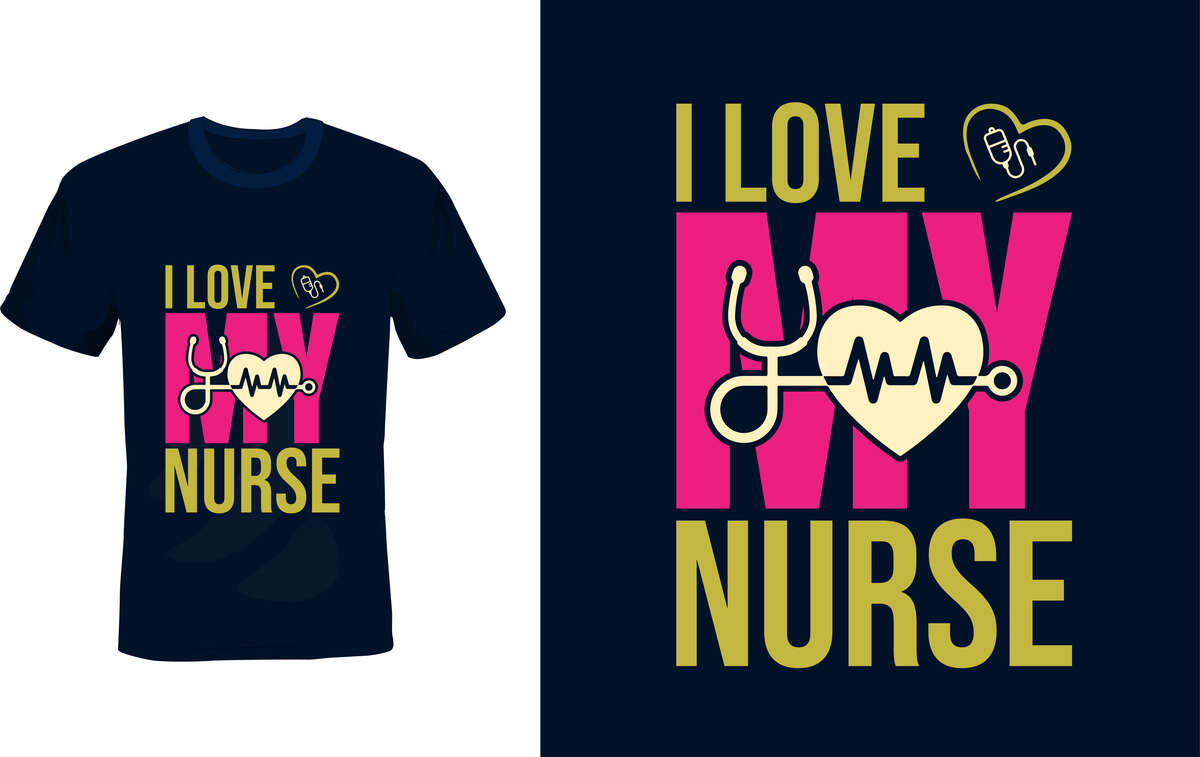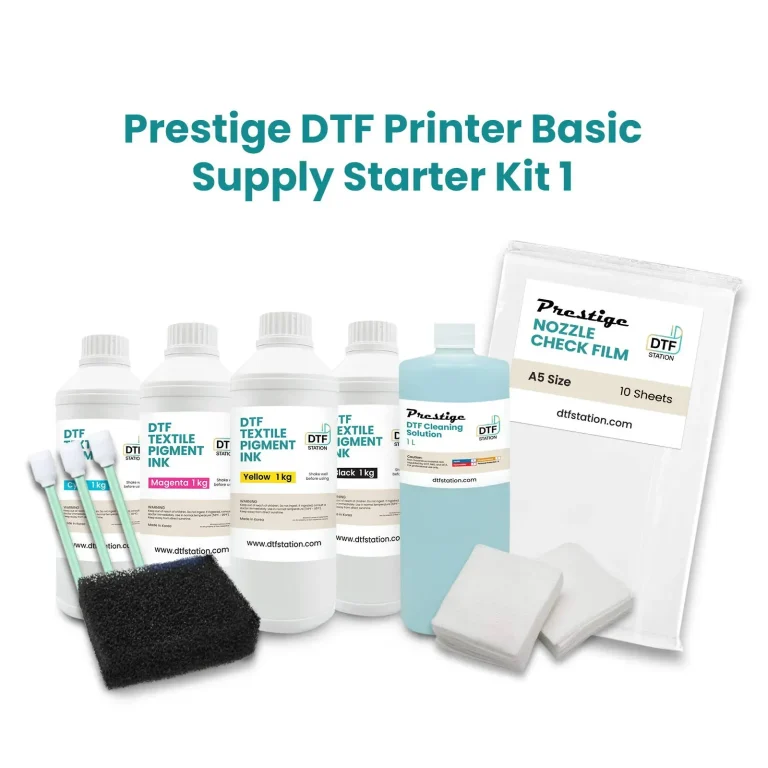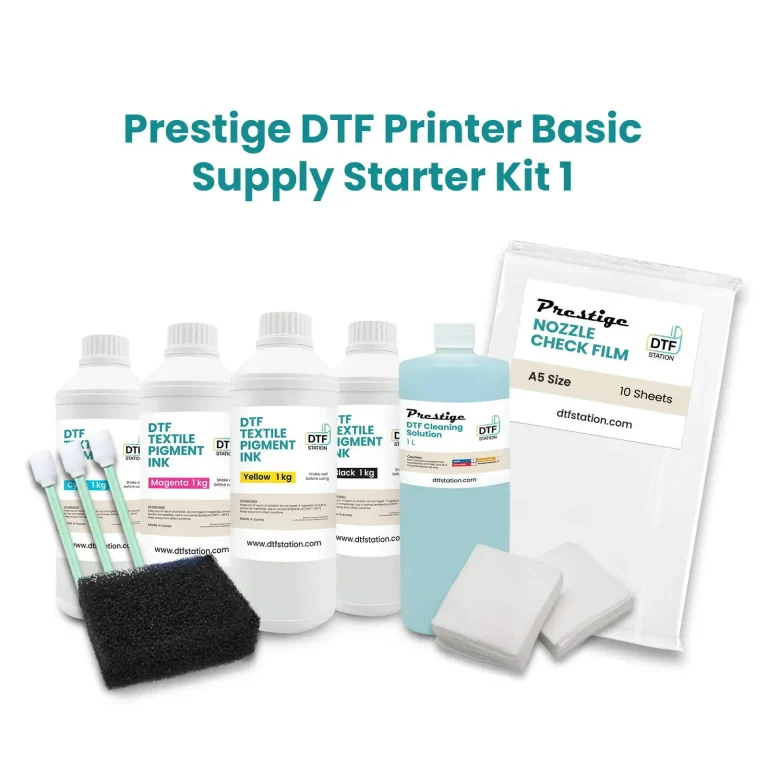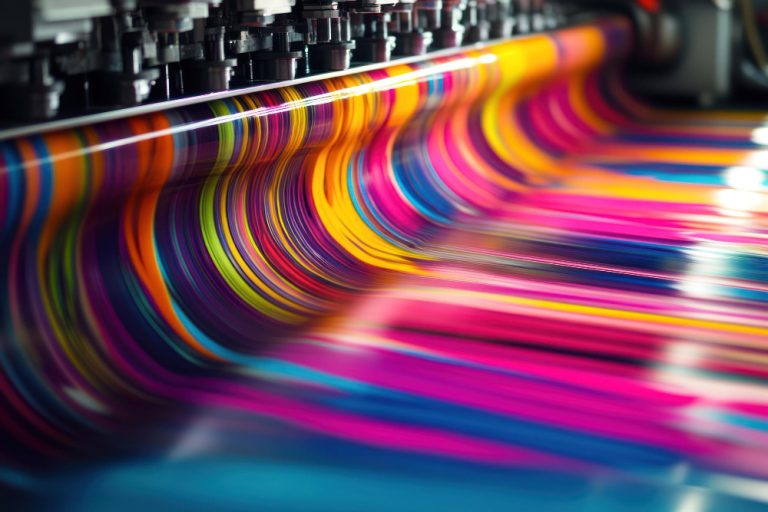DTF supplies play a pivotal role in the booming world of Direct-to-Film printing, which is rapidly changing the landscape of custom apparel production. If you aspire to create stunning fashion pieces or unique merchandise, understanding the essential DTF printing equipment is paramount. To facilitate your journey, this guide will illuminate the various items you need, including DTF transfer film, DTF ink, and a suitable heat press for DTF applications. By ensuring you acquire the best DTF printer and adhering to modern practices, you can guarantee vibrant and durable prints that capture attention. Join us as we delve into the universe of DTF supplies and equip you for a successful venture into this innovative printing technique.
When we talk about DTF printing materials, we refer to the collection of tools and products necessary for successful transfer printing. This includes the specialized film for DTF transfers, vibrant inks designed for this method, and the hot pressing machines that facilitate the application of designs to garments. With the right printing machinery and support products at your disposal, you can achieve high-quality results that meet the demands of contemporary custom fashion. As the industry continues to evolve, it’s essential to stay informed about the equipment and supplies that can optimize your printing experience.
Understanding DTF Printing Equipment
To effectively engage in Direct-to-Film (DTF) printing, it’s imperative to have the right DTF printing equipment. The DTF printer serves as your primary tool for transferring designs onto film, so selecting a top-notch machine is crucial. Machines such as the Epson SureColor series are widely recognized for their precision and ability to produce high-definition prints. Additionally, if you already possess a standard inkjet printer, conversion kits are available, allowing you to transition into the DTF realm without purchasing an entirely new device.
In addition to the printer, various accessories complement your DTF printing setup, such as specialized rip software that optimizes color output and manages print settings. Investing in a reliable setup not only enhances the quality of your prints but also boosts overall productivity, enabling you to fulfill customer orders efficiently.
The Importance of Quality DTF Transfer Film
DTF transfer film is a critical component in the DTF printing process, as it directly influences the final outcome of your designs. When selecting DTF transfer film, prioritize high-quality options to ensure optimal adhesion and vibrant colors. There are two primary types: clear films and milky films. Clear films are ideal for intricate designs and allow colors to pop, while milky films are suited for prints where opacity is essential, such as vibrant whites or dark colors on light fabrics.
Using low-quality transfer film can lead to issues like peeling or cracking of prints, which significantly diminishes the quality of your final product. Therefore, sticking to reputable suppliers who provide reliable DTF transfer films is a smart step for anyone serious about custom apparel production.
Choosing the Right DTF Inks for Optimal Results
The choice of DTF inks can make or break your printing outcomes. Water-based DTF inks are becoming the standard due to their eco-friendliness and ease of use compared to solvent-based options. These inks not only offer excellent vibrancy but also adhere well to the DTF transfer film, ensuring your prints maintain sharpness and clarity.
Moreover, investing in high-quality DTF inks minimizes the risk of nozzle clogs and ensures a smoother operation overall. It’s advisable to regularly check the expiration date and storage conditions of your inks to prolong their shelf life and performance, thus enhancing your productivity and print quality.
Selecting the Best Heat Press for DTF
A heat press is an indispensable tool in the DTF printing process, as it transfers prints from the film onto fabric. Selecting the right heat press can significantly influence the effectiveness of this transfer. There are various models available, including clam shell and draw-style presses, each with their benefits. A clam shell press tends to take up less space, making it ideal for smaller workshops, while a draw press provides easier access for larger materials.
Regardless of the style you choose, ensure that the heat press maintains consistent temperature and pressure throughout the application process. Inconsistent heating can lead to poor transfers, which can severely impact the quality of your apparel. Therefore, investing in a reliable heat press tailored to your printing needs will lead to more professional and durable results.
The Role of Adhesive Powder in DTF Printing
Adhesive powder is a vital ingredient in the DTF printing process, acting as the bonding agent that secures prints to fabrics. After printing your design on DTF transfer film, a thin layer of adhesive powder is sprinkled over the print before it’s cured. This step enhances the bonding properties, ensuring that the design adheres firmly to the garment during heat application.
Choosing high-quality adhesive powder is essential; inferior powders may lead to poor adhesion, resulting in prints that lift or wash out after a few cycles. To achieve the best results, follow the manufacturer’s guidelines on application and curing processes, ensuring your prints stand the test of time.
Trends in DTF Supplies: What to Watch For
As the DTF printing sector matures, several trends are shaping the way businesses operate. One of the most notable is the emergence of bundled equipment packages tailored for beginners. These starter kits typically include all essential DTF supplies at competitive prices, making it easier for newcomers to break into the market without overwhelming financial commitment.
Another trend gaining traction is the emphasis on quality control throughout the supply chain. Companies are increasingly prioritizing high-quality DTF inks and transfer films, recognizing that these elements are key to producing exceptional results. As a novice in DTF printing, staying updated on these trends can provide significant advantages, helping you refine your craft while remaining competitive.
Frequently Asked Questions
What essential DTF supplies do I need to start printing?
To start with DTF printing, you’ll need the following essential DTF supplies: a DTF printer (preferably like the Epson SureColor series), DTF transfer film (both clear and milky options), water-based DTF inks for vibrant prints, a reliable heat press for DTF transfers, adhesive powder for strong fabric bonding, and optionally a curing oven for enhanced durability.
How do I choose the best DTF printer for my needs?
When looking for the best DTF printer, consider factors like print quality, compatibility with DTF inks, and whether it can handle the print volume you plan to produce. The Epson SureColor series is highly recommended for its high-definition output and compatibility with DTF printing technology.
What is DTF transfer film, and why is it important?
DTF transfer film is crucial in the DTF printing process as it is where your designs are printed before being transferred to garments. High-quality DTF transfer films come in clear and milky options: milky films are ideal for opaque colors while clear films are better for intricate designs, ensuring optimal print clarity.
How does a heat press for DTF work, and what should I look for?
A heat press for DTF works by applying heat and pressure to transfer the printed design from the DTF transfer film to the fabric. Look for a heat press that offers consistent heat distribution and adjustable pressure settings. Different types, such as clam shell or flat presses, suit various workspace needs.
What type of DTF inks should I use for my projects?
For DTF printing, it is essential to use water-based DTF inks, which are favored for their non-toxic nature and superior adhesion to transfer films. This type of ink ensures brighter, sharper prints that maintain their vibrancy over time, enhancing the quality of your finished products.
Can I use a regular printer for DTF printing by modifying it?
Yes, you can use a regular inkjet printer for DTF printing by using Epson DTF inks and conversion kits available from some suppliers. This option can be a cost-effective way to start your DTF printing journey without investing in dedicated DTF printing equipment right away.
| Key Points | Description |
|---|---|
| DTF Printer | Essential for high-definition outputs, with options for printer conversion kits. |
| DTF Transfer Film | Essential for printing designs; choose between clear and milky films based on design needs. |
| DTF Inks | Water-based inks are preferred for their vibrancy and non-toxic properties. |
| Heat Press | Necessary for transferring designs; consistency in heat and pressure is key. |
| Adhesive Powder | Crucial for bonding prints to fabric; quality is essential to prevent peeling. |
| Curing Oven (Optional) | Offers consistent curing method for better durability and print quality. |
| Software | Programs like Adobe Illustrator help in preparing and fine-tuning designs. |
Summary
DTF supplies are essential for anyone looking to start their journey in DTF printing. With the right equipment, including a DTF printer and transfer films, you can achieve high-quality prints that make a difference in custom apparel. Understanding and investing in these key supplies, such as water-based inks and a reliable heat press, will not only streamline your printing process but also enhance the end product quality. As you dive into this exciting industry, staying informed about new trends and utilizing community resources will further pave the way for your success in DTF printing.






